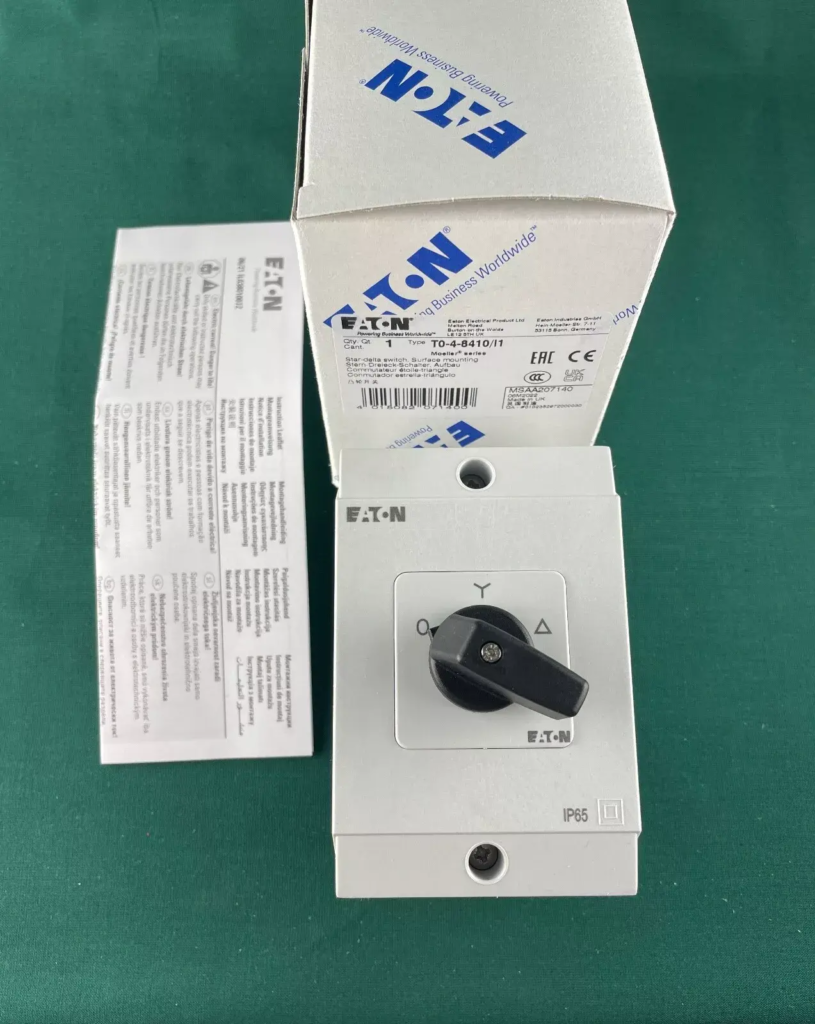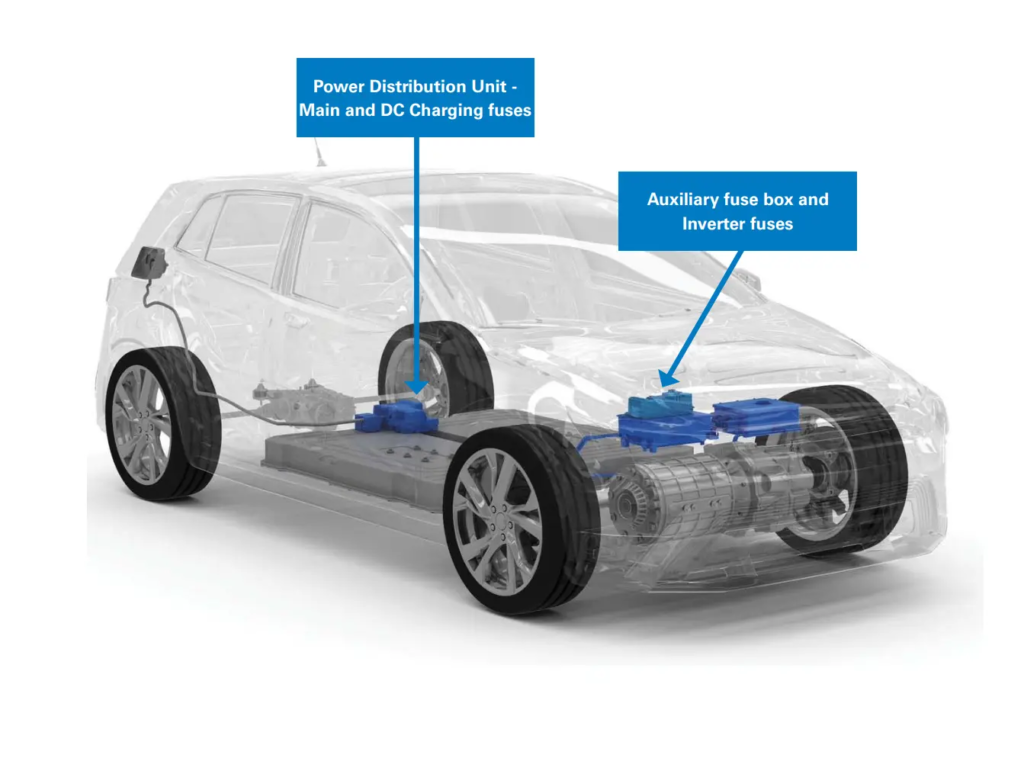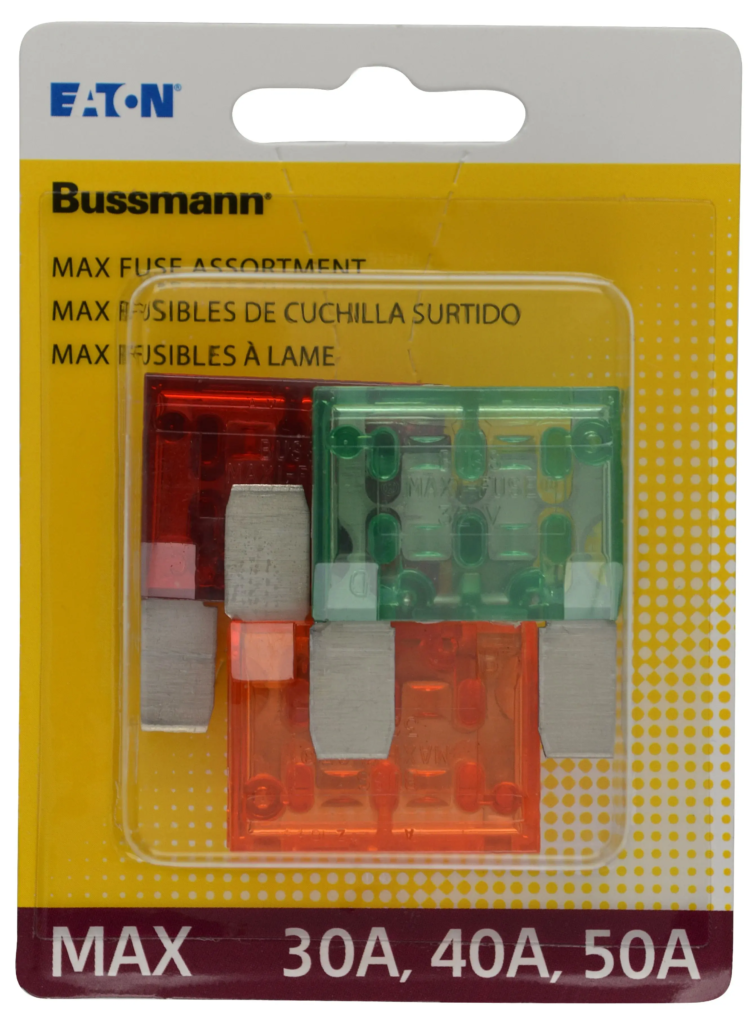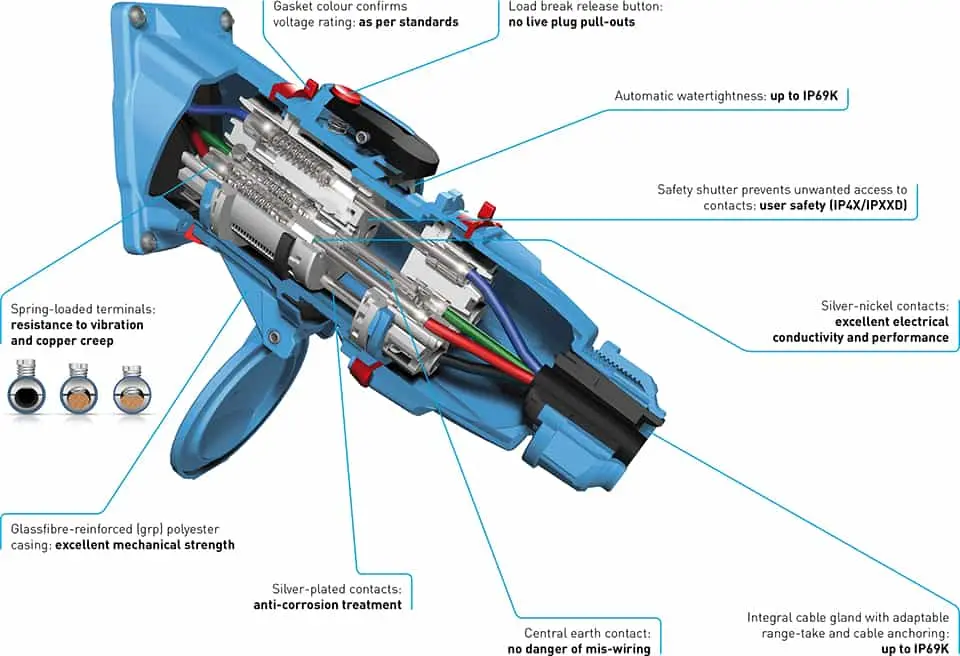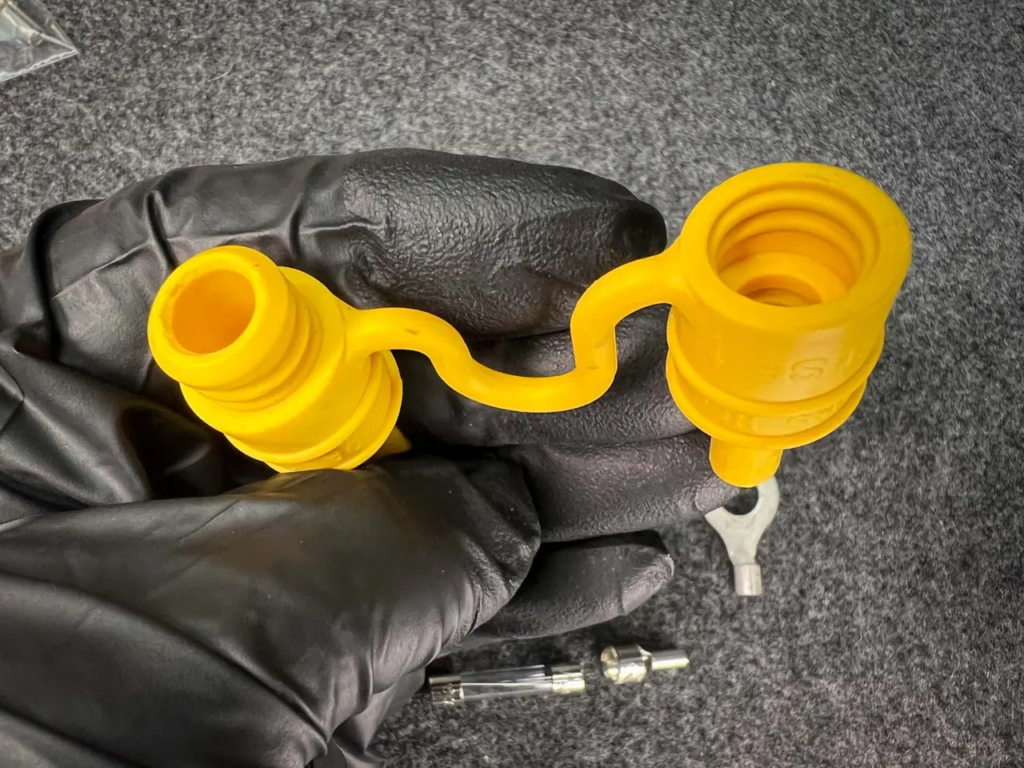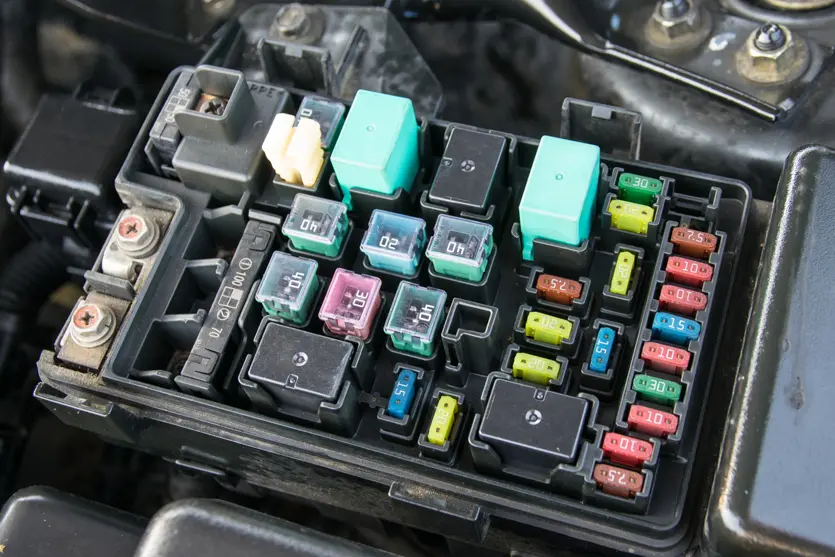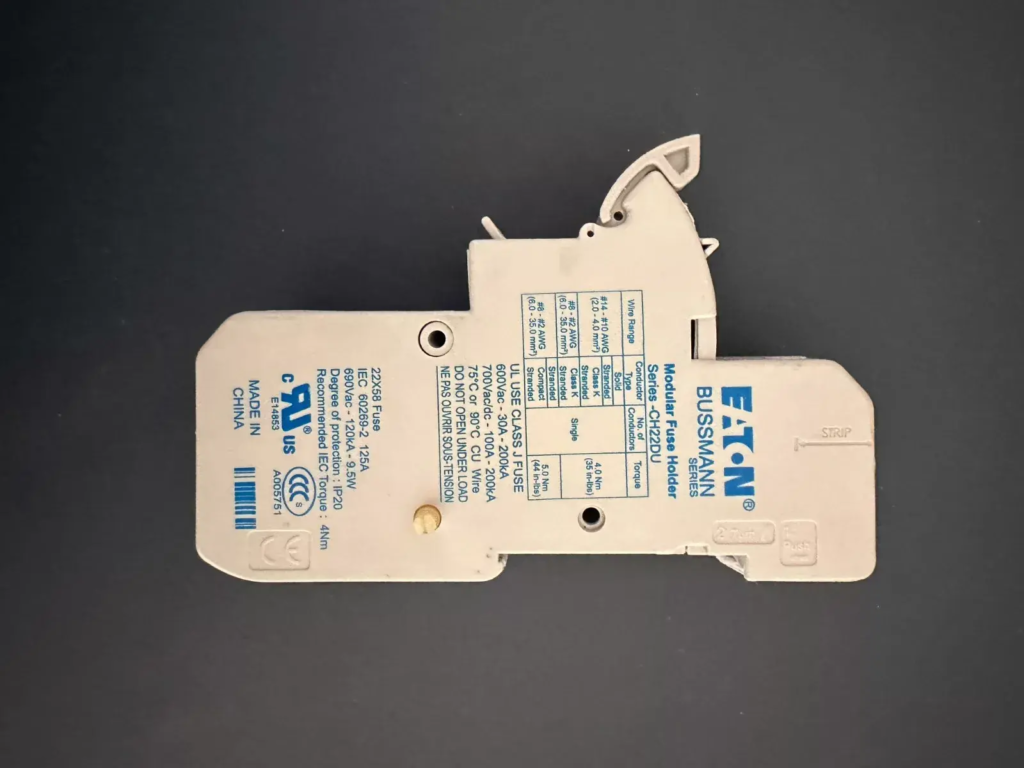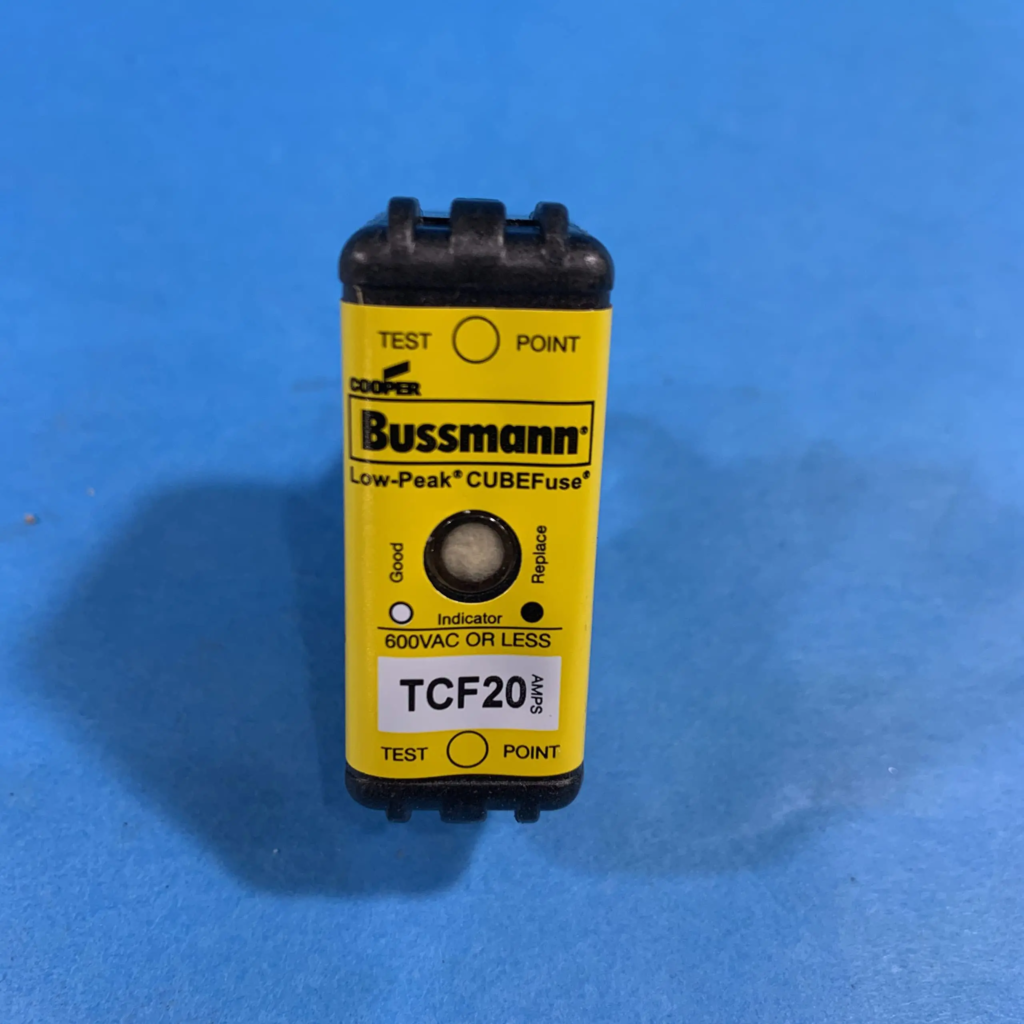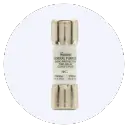Bussmann FNQ Fuses
Eaton Bussmann FNQ-1/8 Low Voltage Fuse
Rated 5.00 out of 5In stock
$16.74EachSKU: FNQ-1/8Weight 0.175 lbs Dimensions 0.01138889 × 0.01138889 × 0.04166667 yd Brand Eaton Bussmann
Eaton-Bussmann, with its headquarters in St. Louis, Missouri, is a division of Eaton Corporation that specializes in the production of circuit protection products. These products are designed for use in the electrical, electronic, and automotive industries, both domestically and on a global scale. The company boasts a strong manufacturing network with facilities located in three domestic and six international locations, reflecting its commitment to serving customers worldwide. With a team of approximately 3,000 employees, Eaton-Bussmann is well-positioned to meet the ever-evolving needs of its customers in the electrical protection industry.
Eaton stands as a forward-thinking leader in power management, focused on enhancing lifestyles and safeguarding the planet. Leveraging the worldwide momentum of electrification and digital innovation, they propel the global shift towards renewable energy, addressing pressing power management issues on a global scale.Product type Low Voltage Fuse
Voltage 500 Volt
Eaton Bussmann FNQ-R-1/10 Low Voltage Fuse
Rated 5.00 out of 5In stock
$11.33EachSKU: FNQ-R-1/10Weight 0.175 lbs Dimensions 0.01138889 × 0.01138889 × 0.04166667 yd Brand Eaton Bussmann
Eaton-Bussmann, with its headquarters in St. Louis, Missouri, is a division of Eaton Corporation that specializes in the production of circuit protection products. These products are designed for use in the electrical, electronic, and automotive industries, both domestically and on a global scale. The company boasts a strong manufacturing network with facilities located in three domestic and six international locations, reflecting its commitment to serving customers worldwide. With a team of approximately 3,000 employees, Eaton-Bussmann is well-positioned to meet the ever-evolving needs of its customers in the electrical protection industry.
Eaton stands as a forward-thinking leader in power management, focused on enhancing lifestyles and safeguarding the planet. Leveraging the worldwide momentum of electrification and digital innovation, they propel the global shift towards renewable energy, addressing pressing power management issues on a global scale.Product type Low Voltage Fuse
Voltage 500 Volt
Bussmann WCF Fuses
Bussmann FCF Fuses
Eaton Bussmann Series UL Class CF, FCF 1RN Fuse
Rated 5.00 out of 5In stock
$79.99SKU: FCF1RNBrand Eaton Bussmann
Eaton-Bussmann, with its headquarters in St. Louis, Missouri, is a division of Eaton Corporation that specializes in the production of circuit protection products. These products are designed for use in the electrical, electronic, and automotive industries, both domestically and on a global scale. The company boasts a strong manufacturing network with facilities located in three domestic and six international locations, reflecting its commitment to serving customers worldwide. With a team of approximately 3,000 employees, Eaton-Bussmann is well-positioned to meet the ever-evolving needs of its customers in the electrical protection industry.
Eaton stands as a forward-thinking leader in power management, focused on enhancing lifestyles and safeguarding the planet. Leveraging the worldwide momentum of electrification and digital innovation, they propel the global shift towards renewable energy, addressing pressing power management issues on a global scale.Product type Fuse
Voltage 600 Volt
Bussmann FRS Fuses
Bussmann HEB-AA Fuse
Eaton Bussmann HEB-AA Inline Fuse Holder
Rated 5.00 out of 5In stock
$18.99SKU: 504-HEB-AA-2Brand Eaton Bussmann
Eaton-Bussmann, with its headquarters in St. Louis, Missouri, is a division of Eaton Corporation that specializes in the production of circuit protection products. These products are designed for use in the electrical, electronic, and automotive industries, both domestically and on a global scale. The company boasts a strong manufacturing network with facilities located in three domestic and six international locations, reflecting its commitment to serving customers worldwide. With a team of approximately 3,000 employees, Eaton-Bussmann is well-positioned to meet the ever-evolving needs of its customers in the electrical protection industry.
Eaton stands as a forward-thinking leader in power management, focused on enhancing lifestyles and safeguarding the planet. Leveraging the worldwide momentum of electrification and digital innovation, they propel the global shift towards renewable energy, addressing pressing power management issues on a global scale.Product type Fuse
Voltage 600 Volt
Bussmann JJN Fuses
Bussmann JJS Fuses
Bussmann JKS Fuses
Eaton Bussmann Fuse JKS-1 Low Voltage Fuse
Rated 5.00 out of 5In stock
$13.99SKU: JKS-1Brand Eaton Bussmann
Eaton-Bussmann, with its headquarters in St. Louis, Missouri, is a division of Eaton Corporation that specializes in the production of circuit protection products. These products are designed for use in the electrical, electronic, and automotive industries, both domestically and on a global scale. The company boasts a strong manufacturing network with facilities located in three domestic and six international locations, reflecting its commitment to serving customers worldwide. With a team of approximately 3,000 employees, Eaton-Bussmann is well-positioned to meet the ever-evolving needs of its customers in the electrical protection industry.
Eaton stands as a forward-thinking leader in power management, focused on enhancing lifestyles and safeguarding the planet. Leveraging the worldwide momentum of electrification and digital innovation, they propel the global shift towards renewable energy, addressing pressing power management issues on a global scale.Product type Low Voltage Fuse
Voltage 600 Volt
Bussmann KRP Fuses
Why Circuit Breakers Are Preferred Over Fuses: A Comprehensive Guide
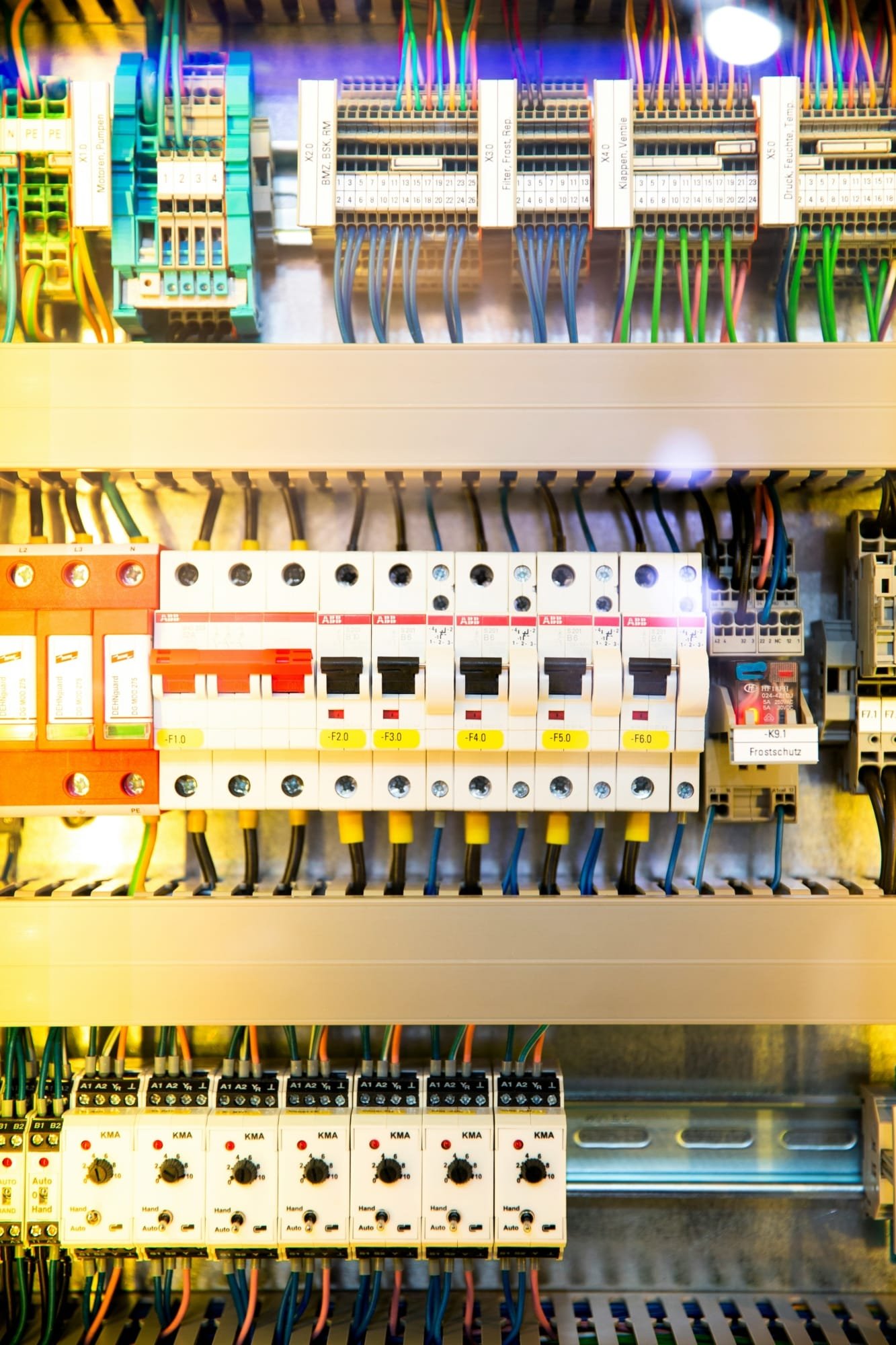
Introduction to Circuit Breakers and Fuses
Circuit breakers and fuses are essential components of electrical systems, designed primarily to protect circuits from damage caused by overloads and short circuits. Their fundamental function lies in safeguarding wiring and connected devices from potential harm due to excessive current flow. Understanding how they work and their respective advantages is crucial for anyone looking to maintain a safe electrical environment.
A fuse consists of a thin wire that melts when the current exceeds a predetermined level, effectively interrupting the flow of electricity. This action permanently disables the circuit until the fuse is replaced. Fuses are typically used in older electrical installations and provide a straightforward solution to overcurrent protection. However, they demand regular maintenance, as users must replace blown fuses frequently, leading to potential inconveniences.
On the other hand, circuit breakers operate based on electromagnetic or thermal principles. When they detect an anomaly, such as an overload or a short circuit, they automatically interrupt the electrical flow without the need for replacement. Users can easily reset a circuit breaker to restore power, making it a more convenient and reliable option compared to fuses. Circuit breakers also offer enhanced protection features, including the ability to minimize damage from arc faults and ground faults.
In summary, both circuit breakers and fuses play vital roles in the monitoring and protection of electrical circuits. While fuses serve as a simple solution, circuit breakers provide greater convenience and efficiency, making them increasingly popular in modern electrical systems. This overview sets the foundation for a more detailed comparison of these two protective devices, highlighting the reasons circuit breakers have become the preferred choice in contemporary applications.
How Circuit Breakers Work
Circuit breakers serve as a crucial safety mechanism in electrical systems, automatically interrupting circuits to prevent damage and potential hazards. They come in various types, each designed to handle different operational requirements and fault conditions. The three primary types of circuit breakers are thermal, magnetic, and residual current devices (RCDs), each functioning based on distinct operational principles.
Thermal circuit breakers operate using a bimetallic strip that bends when heated. When an electrical current exceeds the designated limit, the heat generated causes the strip to deform, triggering a mechanical mechanism that opens the circuit. This type of breaker is particularly effective in providing protection against prolonged overloads, making it suitable for residential applications.
On the other hand, magnetic circuit breakers utilize electromagnetic principles to manage fault conditions. When current surges occur, a strong magnetic field forms around an electromagnetic coil. If the current exceeds a predetermined threshold, the magnetic force becomes sufficient to actuate the mechanism that interrupts the circuit. These breakers react extremely quickly, providing enhanced protection against short circuit situations.
Residual current devices (RCDs) monitor the balance of electrical current flowing through the live and neutral wires. If they detect a discrepancy—indicating a potential leakage to the ground—they swiftly disconnect the circuit. This characteristic makes RCDs particularly effective in safeguarding against electric shocks and minimizing risks associated with fault currents.
In summary, the operational mechanisms of circuit breakers, including thermal, magnetic, and residual current devices, indicate their significant role in enhancing electrical safety. Their capability to automatically interrupt circuits during fault conditions underscores why they are preferred over traditional fuses, providing reliable and efficient solutions for various electrical applications.
How Fuses Work
A fuse is an essential component in electrical circuits, serving primarily as a protective device against overload conditions. Typically constructed using a metal wire or strip made from materials such as copper, aluminum, or an alloy, the fuse is designed to melt and break the circuit when excessive current flows through it. This operation is fundamental to prevent potential damage to appliances and electrical systems.
The function of a fuse relies on its core principle of thermal conductivity. When electrical current passes through the fuse element, it generates heat due to the resistance encountered. Under normal operating conditions, the amount of current remains within safe limits, allowing the fuse to remain intact. However, if the current exceeds the rated value of the fuse, the resulting heat builds up, causing the metal wire to melt. This melting process effectively interrupts the circuit, ensuring that further electricity does not flow and mitigating the risk of overheating or electrical fires.
While fuses serve their purpose effectively, they also exhibit certain limitations that can affect their reliability. One notable disadvantage is the relatively slow response time to overcurrent situations, which can lead to a delay in circuit disconnection. This property can result in damage to connected devices before the fuse has a chance to act. Furthermore, once a fuse has operated by melting, it requires replacement, which may not be as convenient as the resettable characteristics of some modern circuit protection devices.
In summary, despite their effectiveness in providing circuit protection, the inherent limitations of fuses regarding speed and the need for replacement make them less favorable compared to alternative devices such as circuit breakers. Understanding how fuses work is important for recognizing their role in electrical safety and the evolution toward more reliable protective systems.
Key Differences Between Circuit Breakers and Fuses
Circuit breakers and fuses serve the crucial function of protecting electrical circuits from damage caused by overloads or short circuits. Nevertheless, they differ significantly in design, functionality, and overall efficiency. Understanding these differences can illuminate why circuit breakers are often favored over fuses in modern electrical installations.
One of the most notable differences is in their functionality. Circuit breakers are electromechanical devices that interrupt the flow of electricity when an anomaly is detected. They can be reset easily with a switch after tripping, which restores functionality without the need for replacement. In contrast, fuses contain a metal wire that melts when the current exceeds a predetermined threshold, thereby interrupting the circuit. Once a fuse blows, it must be replaced, leading to potential downtime and inconvenience.
Moreover, the lifespan of circuit breakers typically surpasses that of fuses. Circuit breakers can endure numerous interruptions without degrading, making them a more sustainable choice for long-term electrical protection. Fuses, however, wear out over time and need to be replaced after each occurrence of excessive current, which can result in increased operational costs.
When it comes to maintenance, circuit breakers generally require less frequent intervention. Most circuit breakers can be inspected visually, allowing for quick assessments of their functionality. Fuses, on the other hand, necessitate regular checks to ensure each unit is in working order, increasing the likelihood of maintenance-related issues arising.
In summary, the differences in functionality, reset capabilities, lifespan, and maintenance requirements highlight why circuit breakers are often regarded as a preferable choice compared to fuses in contemporary electrical systems. Their reliability and efficiency make them indispensable in modern circuits.
Safety Advantages of Circuit Breakers
Circuit breakers are crucial components in modern electrical systems, primarily due to their significant safety advantages over traditional fuses. One of the critical benefits of circuit breakers is their ability to prevent electrical fires. When the current flowing through a circuit exceeds its safe capacity, a circuit breaker automatically trips, interrupting the flow of electricity and mitigating the risk of overheating wires, which can ignite combustible materials. This proactive mechanism serves as a vital safeguard against potential fire hazards that can lead to severe damage or loss of life.
Moreover, circuit breakers provide enhanced protection against electrical shock compared to fuses. When short circuits or ground faults occur, a circuit breaker can detect the irregularity almost instantaneously and disconnect the faulty circuit. This rapid response considerably reduces the likelihood of electrocution, ensuring that individuals interacting with electrical appliances remain safe. In contrast, fuses may take longer to blow, exposing users to prolonged hazardous conditions.
Another notable safety feature of circuit breakers is their automatic reset functionality. Once the issue has been resolved, a circuit breaker can be reset with the simple flick of a switch. This allows individuals to restore power quickly without the need to replace components, as is required with burned-out fuses. This ease of use promotes both convenience and safety, since users do not have to fumble with replacement fuses in potentially dangerous situations.
In summary, the safety advantages of circuit breakers demonstrate their superiority over fuses in modern electrical systems. By effectively preventing electrical fires, protecting against electric shock, and allowing for easy resets, circuit breakers enhance overall household safety, making them the preferred choice for residential and commercial applications.
Economic Considerations: Cost and Longevity
When assessing the economic implications of circuit breakers in comparison to fuses, several factors must be taken into account, including initial installation costs, maintenance expenses, and the longevity of both devices. Circuit breakers tend to have a higher upfront cost due to their complex mechanisms and advanced technology. However, their ability to be reset rather than replaced significantly offsets this initial investment over time.
Fuses, on the other hand, are generally less expensive to purchase and install. The simplicity of their construction allows for rapid installation and cost savings at the outset. However, fuses require complete replacement when they blow, leading to recurring costs that can accumulate over time. Furthermore, this reliance on replacement can result in increased downtime and additional labor costs associated with their ongoing management.
In terms of longevity, circuit breakers exhibit a lifespan that can extend for decades with proper care. They are designed to withstand numerous trip cycles and can be reset multiple times, making them a durable option that appeals to both residential and commercial sectors. Conversely, fuses typically have a shorter operational life due to the nature of their function. Regular and unforeseen replacements are often necessary, which diminishes their cost-effectiveness in the long run.
Another economic consideration involves maintenance costs. Circuit breakers generally require less frequent servicing compared to fuses, which must be monitored and replaced regularly, adding to ongoing maintenance expenses. With their combination of exceptional durability, decreased maintenance needs, and the absence of frequent replacements, circuit breakers emerge as a more cost-effective solution in the long run.
Installation and Maintenance of Circuit Breakers and Fuses
When it comes to electrical systems, both circuit breakers and fuses play a crucial role in protecting circuits from overload and faults. However, the installation and maintenance procedures differ significantly between these two protective devices. Understanding these differences can help in making informed choices about which device to utilize in various settings.
The installation of circuit breakers is generally more straightforward than that of fuses. Circuit breakers are designed to be installed in a panel board, where they simply snap into place, facilitating a quicker installation. Additionally, the main advantage lies in their ability to be reset after tripping, eliminating the need for replacement parts. This feature not only aids in the installation process but also in operation, as it minimizes downtime. On the other hand, fuses require a more intricate installation process, as they need to be housed in specific fuse holders. Moreover, each blown fuse necessitates replacement, which can contribute to ongoing maintenance and logistical issues.
In terms of maintenance, circuit breakers provide clear benefits. Regular inspections can typically identify any abnormalities, requiring minimal invasive maintenance. Maintaining a circuit breaker involves checking for loose connections or wear, but no immediate action is needed unless a fault occurs. Conversely, fuses must be regularly replaced, and any inspections require complete disconnection from the power source, making this process more complicated and time-consuming.
Overall, circuit breakers represent a more user-friendly option regarding installation and ongoing maintenance. Their resettable nature and less frequent need for replacement contribute to efficiency and reliability in protecting electrical systems. While fuses still have their applications, the procedural advantages of circuit breakers make them the preferred choice for modern electrical installations.
Environmental Impact and Sustainability
The transition from fuses to circuit breakers has significant implications for environmental sustainability. One of the primary considerations is the material usage in the production of these devices. Circuit breakers are generally manufactured using durable materials that can withstand a greater number of operates compared to traditional fuses. This typically results in a longer lifespan, ultimately reducing the frequency of disposal and the consumption of raw materials. In contrast, fuses are often designed for single-use; once they blow, they must be replaced, leading to higher waste generation over time.
Recyclability is another essential factor that contributes to the sustainability of circuit breakers. Many modern circuit breakers are designed with recyclable components, which means that when they reach the end of their life cycle, they can often be disassembled, and various materials can be recovered. This not only minimizes waste but also aids in promoting the circular economy. On the other hand, typical fuses, particularly those made from mixed materials or with non-recyclable components, do not offer the same level of recyclability, resulting in a larger environmental footprint.
Moreover, the operational efficiency of circuit breakers further enhances their sustainability. By providing consistent protection against electrical faults, circuit breakers reduce the risk of fires and potential hazards associated with electrical failures. This contributes to a safer environment and decreases the chance of accidents that could lead to significant ecological damage. In addition, the ability of circuit breakers to be reset after tripping eliminates the need for frequent replacements, thus lowering both resource consumption and waste management challenges.
In conclusion, when taking into account material usage, recyclability, and overall operational sustainability, circuit breakers emerge as a preferable choice over fuses. Their long lifespan and eco-friendly materials underline their role in advancing environmental sustainability in electrical systems.
Conclusion: The Future of Electrical Protection Systems
In reviewing the merits of circuit breakers compared to fuses, it is clear that technological advancements favor circuit breakers as the future standard in electrical protection systems. While fuses have served as a reliable means of safeguarding electrical circuits for years, they exhibit limitations that modern circuit breakers successfully address. Circuit breakers offer heightened convenience, ease of reset, and superior protection against overloads and short circuits. These advantages underscore the growing preference for circuit breakers in both residential and commercial settings.
Recently, innovations in circuit breaker designs, including smart technology integration, have further enhanced their functionality. Smart circuit breakers can provide real-time monitoring and diagnostic capabilities through the Internet of Things (IoT). This allows homeowners and businesses to track energy consumption patterns, identify potential electrical faults, and respond proactively to changes in their electrical systems. The implementation of AI in these systems promises to refine electrical management and optimize energy efficiency, addressing sustainability goals that are increasingly pertinent in today’s world.
Moreover, as building codes continue to evolve, regulations increasingly mandate the use of circuit breakers over fuses to ensure safety and compliance. The shift towards more complex electrical systems in residential and industrial applications further supports the necessity for the adaptability and reliability that circuit breakers offer. Therefore, it is not only the technological advancements, but also regulatory changes that indicate a future trajectory favoring circuit breakers as fundamental elements of electrical protection systems.
In conclusion, the evidence presented demonstrates that circuit breakers are undoubtedly preferred over fuses due to their numerous advantages and evolving technology. As we move forward, it is reasonable to anticipate that circuit breakers will play a crucial role in advancing electrical protection systems, ensuring both safety and efficiency in our increasingly electrified environments.




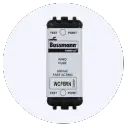 Bussmann WCF Fuses
Bussmann WCF Fuses Bussmann FCF Fuses
Bussmann FCF Fuses
 Bussmann FRS Fuses
Bussmann FRS Fuses Bussmann HEB-AA Fuse
Bussmann HEB-AA Fuse
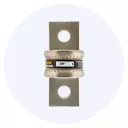 Bussmann JJN Fuses
Bussmann JJN Fuses
 Bussmann JJS Fuses
Bussmann JJS Fuses Bussmann JKS Fuses
Bussmann JKS Fuses
 Bussmann KRP Fuses
Bussmann KRP Fuses

